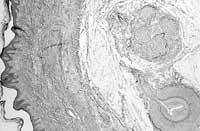Autoimmunity and E2F2 gene
A recent research published in the journal Immunity has had great impact on the world of science. The team of UPV researchers, led by Ana Zubiaga, is responsible for this listening. This team, based on the research of the E2F2 gene, has made an important discovery about autoimmune diseases.

The research began with the intention of studying the E2F2 gene and its family. It is believed that this family of genes is responsible for cell proliferation and they wanted to study how it works. In this family there are 6 different genes, but experts still do not know why they are six, why they are in different organs, how they express themselves in stages of growth, etc.
In this work Ana began research with the E2F1 gene. After analyzing the influence of the E2F1 gene on tumor prevention, the E2F2 function is studied. Although a function similar to that of the same family was expected, they have obtained a surprising result. According to the findings, E2F2 can be the key to autoimmune diseases.
Autoimmune diseases

Autoimmune diseases are malfunctioning of the body's immune system. Our immune system is highly developed and protects us against external viruses or bacteria. The immune system to fulfill this function is able to differentiate the foreign cell from the body's own. However, in cases of autoimmune disease, the system does not make this distinction and sets in motion the defense system. At that time antibodies are produced against the organs and tissues of the body that cause damage to the organs. These diseases include arthritis, lupus, and multiple sclerosis.
Researchers have seen in their experiment with rats that the E2F2 gene has a remarkable influence on autoimmune diseases.
Knock out technique
The research is based on the Knock out genetic engineering technique. According to this technique, to know what is the function of a gene, we must investigate what happens without it.

Stem cells are essential components for the application of this technique. In these stem cells the gene to be studied is deactivated, that is, a mutated stem cell is created. Then this mutated stem cell is introduced into an embryo and embryo development encompasses mutation.
Ana Zubiaga and her team inactivated the E2F2 gene in rats to investigate its function. The researchers saw that: The E2F2 gene was inactivated in rats in which lymphocytes reproduce faster, which may be because rats had an autoimmune disease. Therefore, the function of the E2F2 gene is to control cell proliferation, specifically control of autoimmunity.
Now, the study will analyze its possible application not only in rats but also in humans. To do this they want to see the differences between humans with autoimmune diseases and the E2F2 gene of healthy people. If there are significant differences, research on the E2F2 gene will be strengthened and the pathway to combat these diseases will be opened.

Buletina
Bidali zure helbide elektronikoa eta jaso asteroko buletina zure sarrera-ontzian











